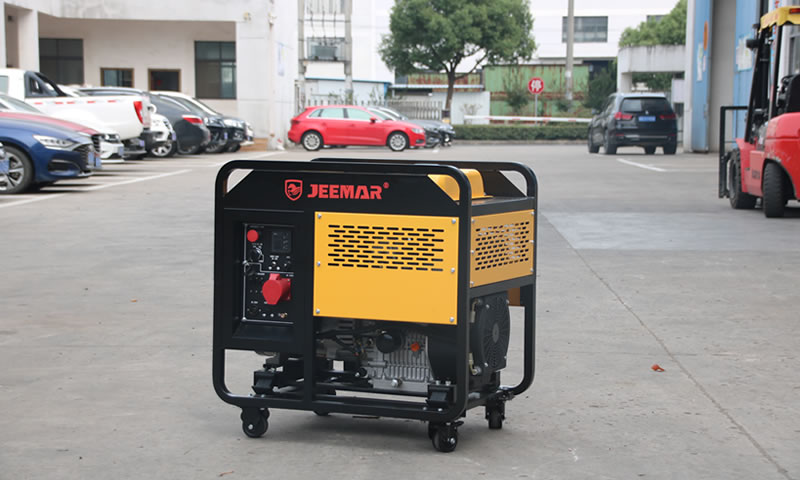Working Principle of Small Diesel Generator
From:
Jeemar Power Date:11-15 Belong to:Industry Trends
Diesel engines actually operate in the same way as gasoline engines, and each working cycle also experiences four strokes of intake, compression, work and exhaust. However, as the fuel used in the diesel engine is diesel, its viscosity is higher than that of gasoline and it is not easy to evaporate, while its auto-ignition temperature is lower than that of gasoline, so the formation and ignition mode of combustible mixture is different from that of gasoline engine.
 The diesel engine draws in pure air during the intake stroke. At the end of the compression stroke, the diesel oil is injected into the cylinder through the injector pump to increase the oil pressure to more than 10 MPa, mixing with the compressed hot air in a short time to form a flammable mixture. Because of the high compression ratio of the diesel engine (generally 16-22), the air pressure in the cylinder can reach 3.5-4.5 MPa at the end of compression and the temperature can reach 750-1000K at the same time (while the gasoline engine will have a mixture pressure of 0.6-1.2 MPa and a temperature of 600-700K at this time), which greatly exceeds the spontaneous combustion temperature of the diesel fuel. Diesel fuel thus burns spontaneously after being injected into the cylinder and mixed with air for a short time. The air pressure in the cylinder rises rapidly to 6-9MPa and the temperature rises to 2000-2500K. Pushed by high-pressure gas, the piston moves downwards and drives the crankshaft to rotate, which drives the generator, and the exhaust gas is also discharged into the atmosphere through the exhaust pipe.
The diesel engine draws in pure air during the intake stroke. At the end of the compression stroke, the diesel oil is injected into the cylinder through the injector pump to increase the oil pressure to more than 10 MPa, mixing with the compressed hot air in a short time to form a flammable mixture. Because of the high compression ratio of the diesel engine (generally 16-22), the air pressure in the cylinder can reach 3.5-4.5 MPa at the end of compression and the temperature can reach 750-1000K at the same time (while the gasoline engine will have a mixture pressure of 0.6-1.2 MPa and a temperature of 600-700K at this time), which greatly exceeds the spontaneous combustion temperature of the diesel fuel. Diesel fuel thus burns spontaneously after being injected into the cylinder and mixed with air for a short time. The air pressure in the cylinder rises rapidly to 6-9MPa and the temperature rises to 2000-2500K. Pushed by high-pressure gas, the piston moves downwards and drives the crankshaft to rotate, which drives the generator, and the exhaust gas is also discharged into the atmosphere through the exhaust pipe.




